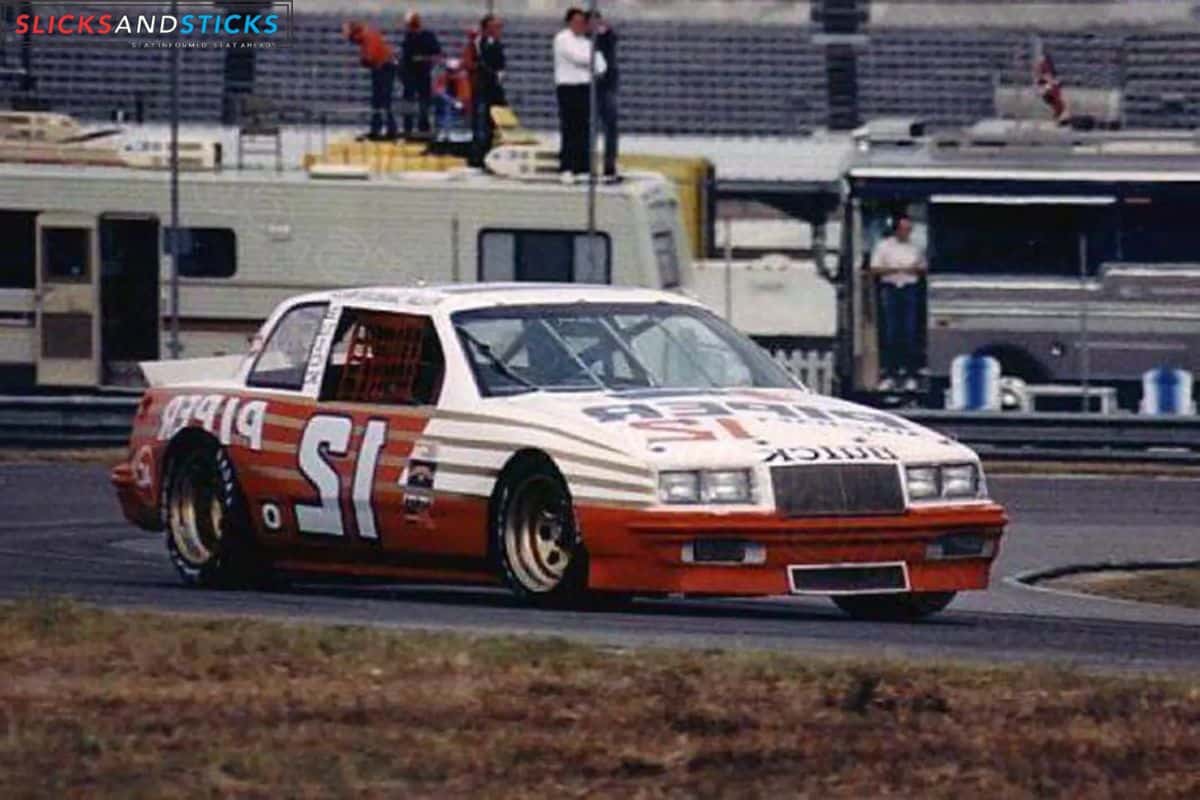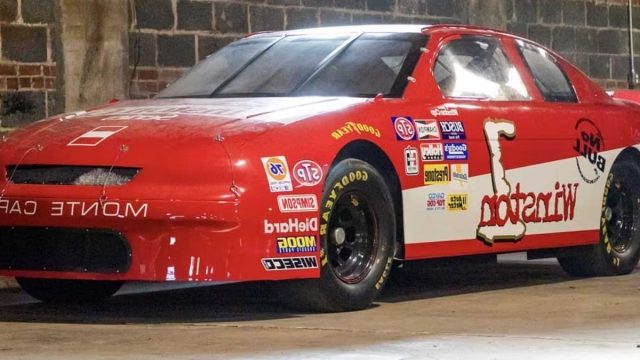NASCAR 1986 L-R Prototype: NASCAR, typically known for its oval and road course events on purpose-built tracks, recently ventured into street course racing at the Chicago Street Race. However, this isn’t the first time NASCAR toyed with the idea of racing on street circuits. A rare and fascinating artifact from NASCAR’s past forays into street course racing has resurfaced and is set for auction.
This unique piece of NASCAR history hails from the 1980s, embodied in a 1986 prototype designed for street racing, famously dubbed the L-R (Left-Right) car. A testament to NASCAR’s exploration of street circuits during that era.
Reports suggest that this Pontiac Sunbird-clad car will go up for auction in January 2024 via Mecum Auctions, offering enthusiasts a chance to own a slice of NASCAR’s experimental phase from decades ago.
The recent leap into street racing marks a notable 36-year gap since NASCAR’s initial endeavor into road-course-only prototypes.
In a reminiscent throwback, NASCAR on NBC shared a post on X (formerly Twitter) in July 2022, recalling the prototype’s testing phase. The post mentioned that Dale Earnhardt was among the test drivers for this intriguing concept.
During the mid-1980s, NASCAR entertained the idea of tapping into road racing, influenced by the IndyCar Series (then known as CART) and IMSA’s growing focus on street race events. However, these ambitious plans were eventually shelved, with NASCAR opting not to pursue a road-course-only series and instead focusing on its nationwide racing program. The sport continued its road course events using existing cars at venues like Road America and Sonoma Raceway.
Nicknamed the L-R car, this prototype boasted a custom chassis crafted by renowned constructor Banjo Matthews. It flaunted a shorter wheelbase of 101 inches compared to the Cup and Xfinity Series cars of that era.

The project was later entrusted to Richard Childress Racing to complete the car after the chassis’ construction. Dale Earnhardt, after testing the newly assembled machine, shared his feedback, noting its front-heavy nature and the need for significant improvements:
“It’s a little front-heavy. The weight’s not quite as good as it needs to be on the car. There’s a lot of improvement to be made,” remarked Dale Earnhardt.
This prototype race car was notably lighter than the Cup Series cars from that era, shedding approximately 600 lbs off the traditional plate racers. However, with the weight distribution being 56% towards the front axle within the 3000 lbs vehicle, turning presented challenges due to the inherent “front-heavy” sensation.
This nostalgic artifact serves as a reminder of NASCAR’s evolutionary journey, particularly contrasting it with the modern Next-Gen car, adaptable to both ovals and road courses.
ALSO READ: RFK Racing Expansion: IMSA SportCar Championship and NASCAR Cup Series Ventures
Our Reader’s Queries
Has a rookie ever won the Nascar Cup Series Championship?
Elliott made history at Phoenix by securing the Nationwide Series championship with a 53-point lead over his teammate, Regan Smith. As the first rookie and youngest driver to win a NASCAR national series title, Elliott’s achievement is truly remarkable. His talent and determination have earned him a well-deserved place in the record books.
What happens to old NASCAR stock cars?
Gordon, an expert in recycling, believes that everything can be reused. He has even shredded hundreds of race cars and sent their remains to a mini-mill to be refined back into raw steel. This process is not only environmentally friendly, but also economically beneficial as steel is worth seven cents a pound as scrap. Additionally, aluminum can fetch 40 cents, making it another valuable material to recycle. By reusing materials, we can reduce waste and contribute to a more sustainable future.
How much horsepower does a next generation NASCAR engine have?
The latest NASCAR engines, known as Next Gen, have been designed to be even less powerful than their predecessors. These engines are rated at 510 hp (380 kW) for restrictor plate racing, and 670 hp (500 kW) for all other tracks, including road courses, short tracks, and intermediate ovals. This reduction in power has been implemented to promote closer racing and more exciting competition on the track. With these new engines, drivers will need to rely more on their skills and strategy to come out on top.
What is the most iconic NASCAR car?
No compilation of iconic NASCAR cars could ever be considered comprehensive without the inclusion of Dale Earnhardt’s infamous black No. 3 Chevrolet Monte Carlo. The “Intimidator’s” vehicle boasted a sleek and menacing appearance that struck fear into the hearts of his competitors. It was a true powerhouse on the track, and its legacy lives on to this day.
